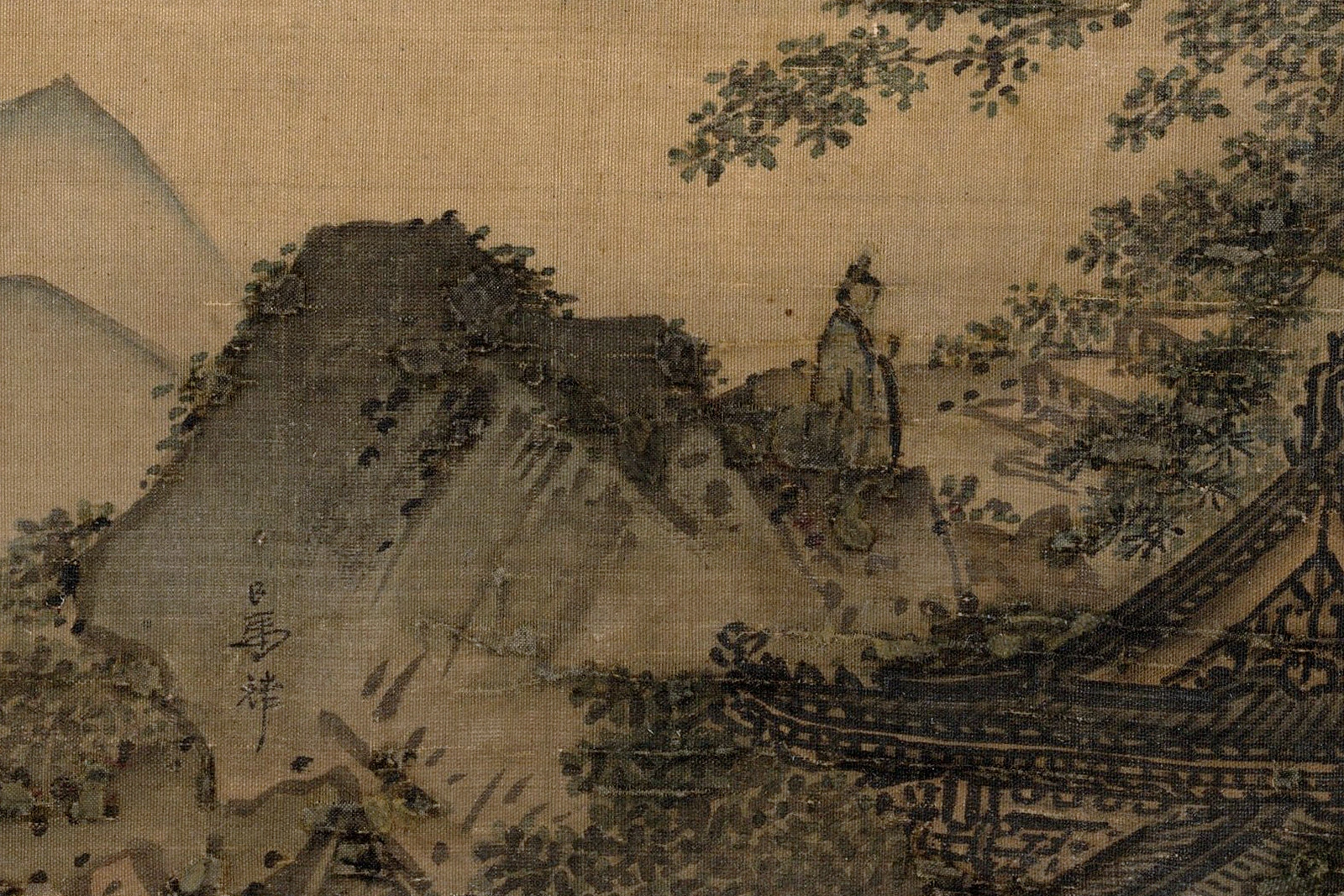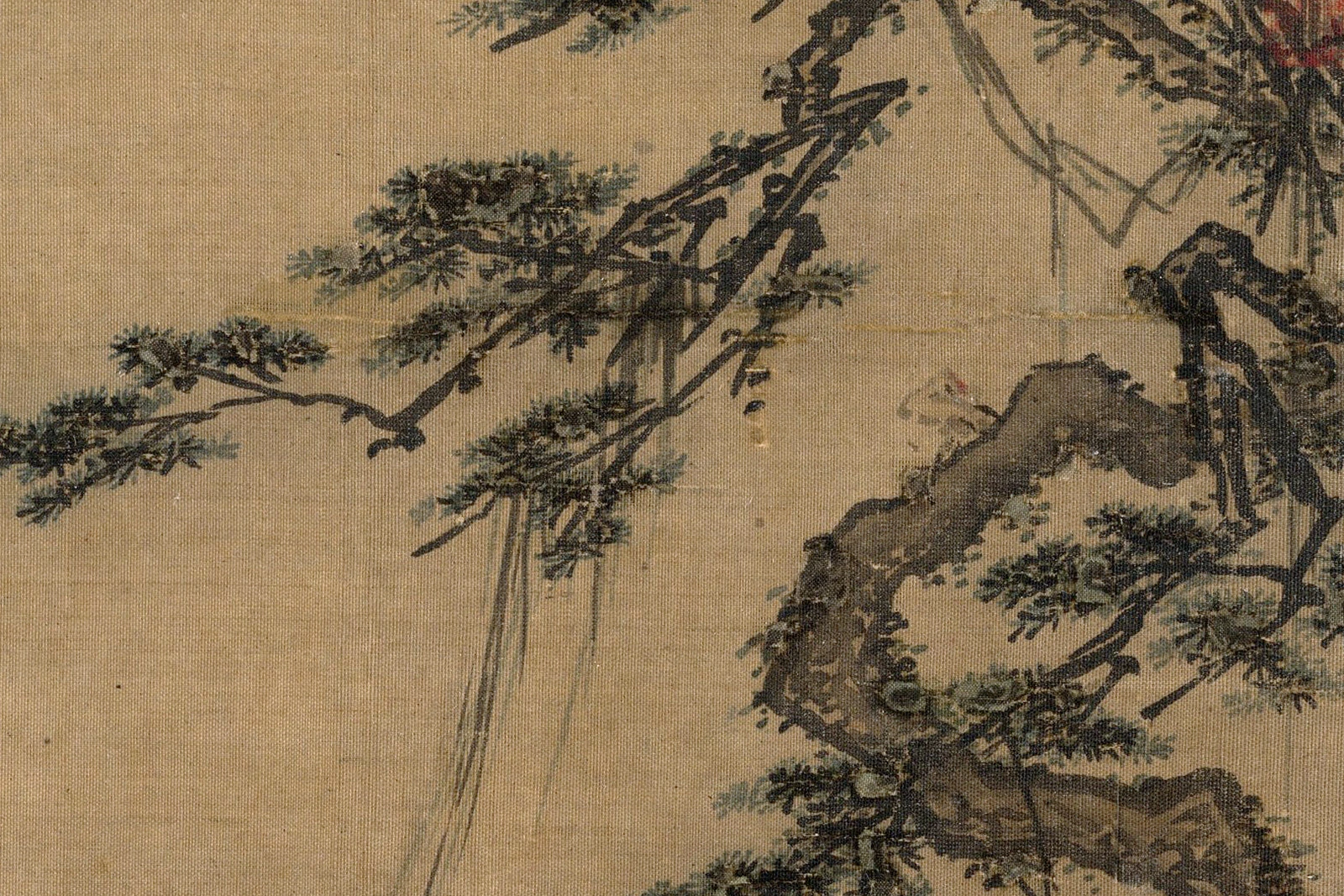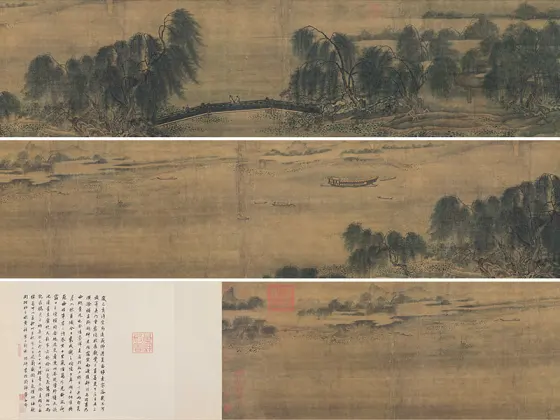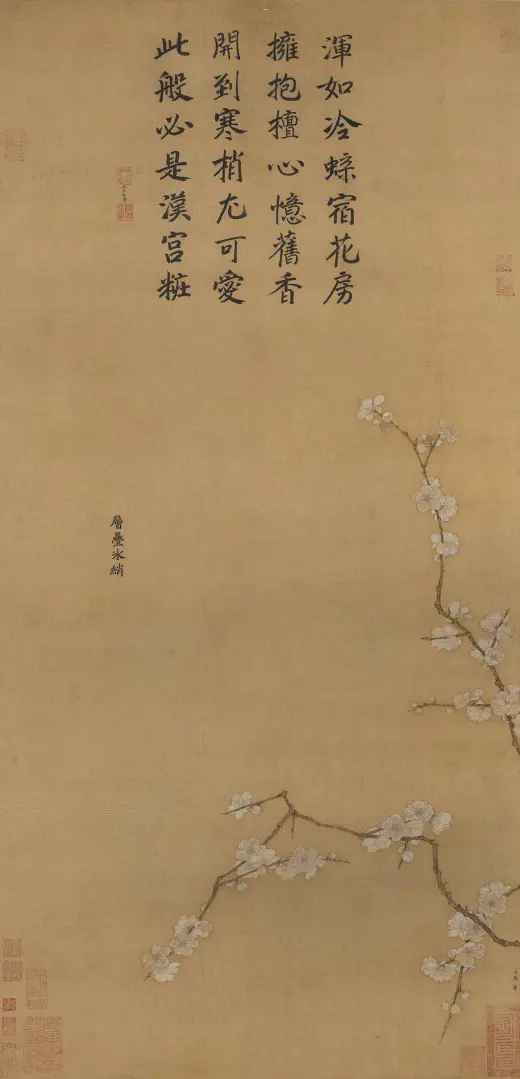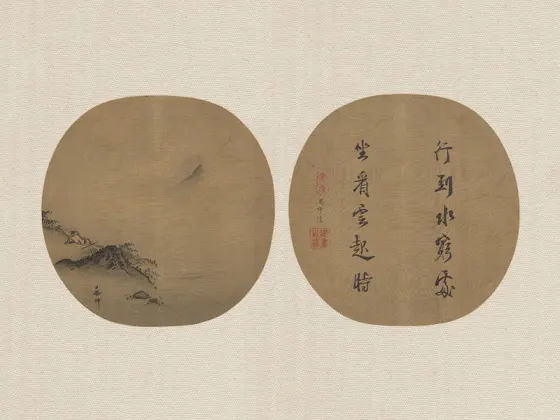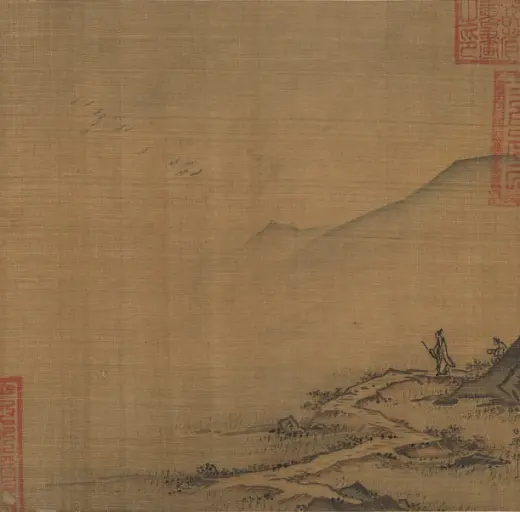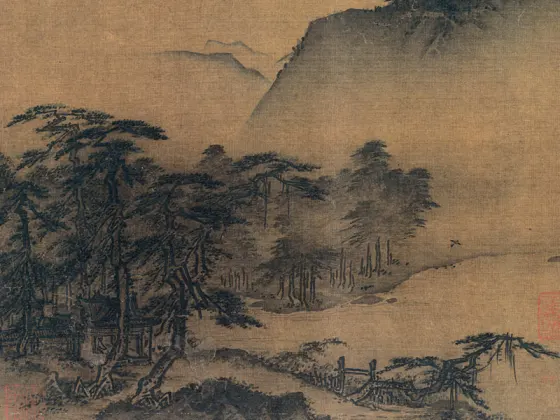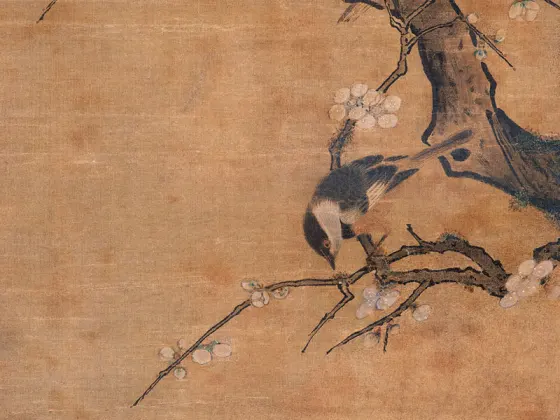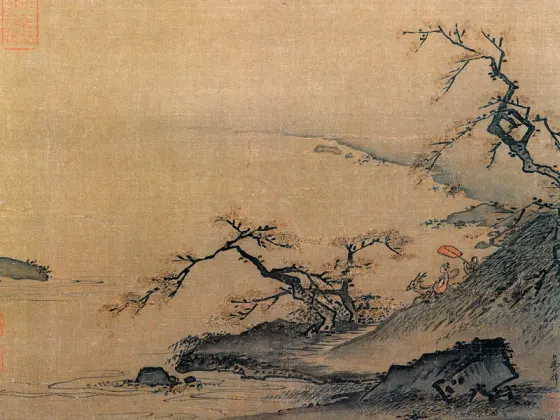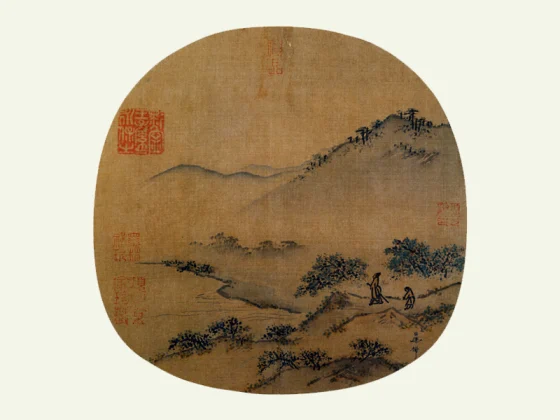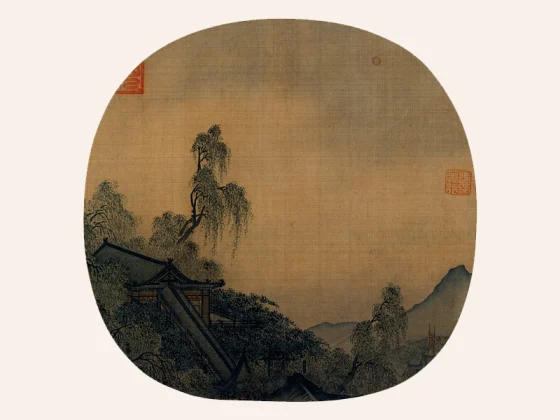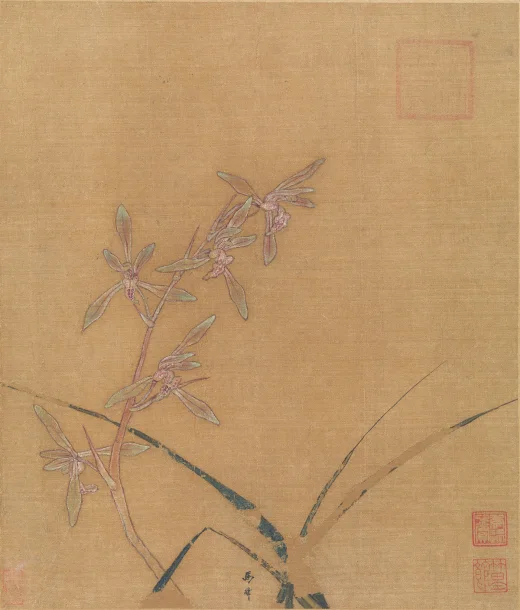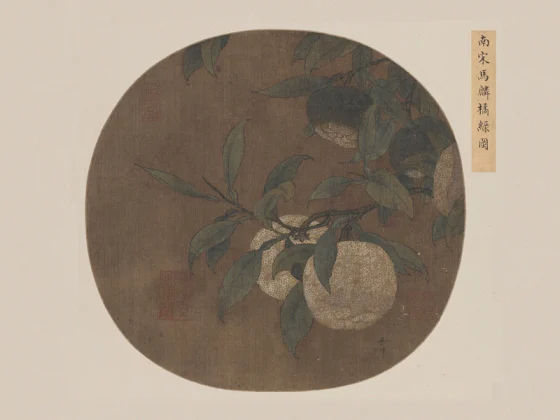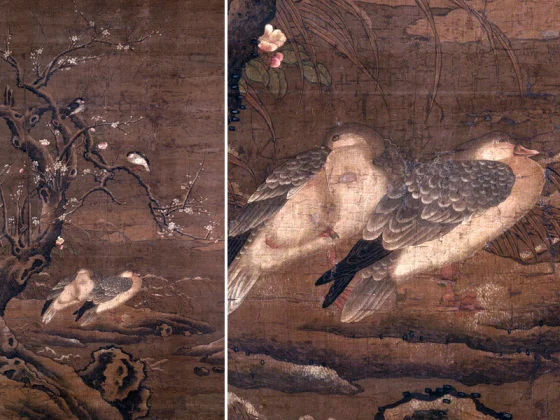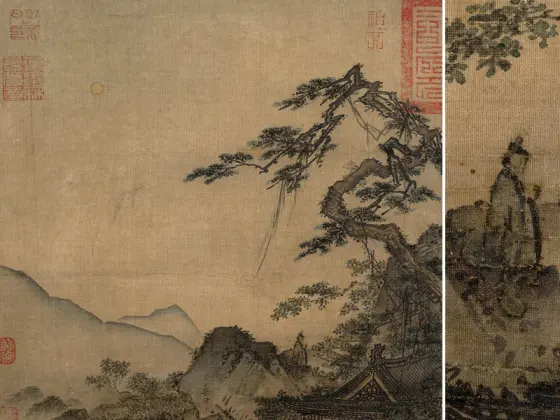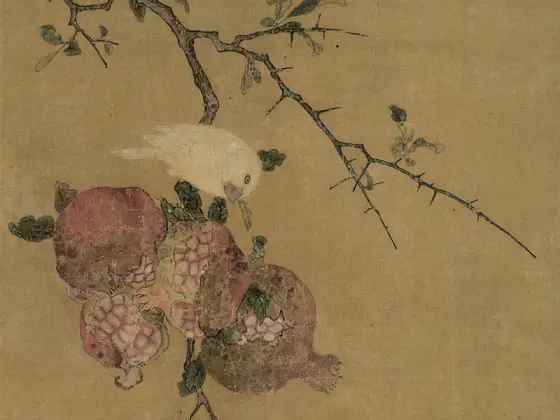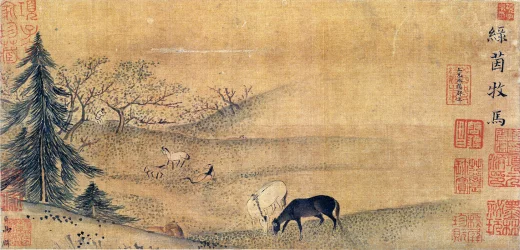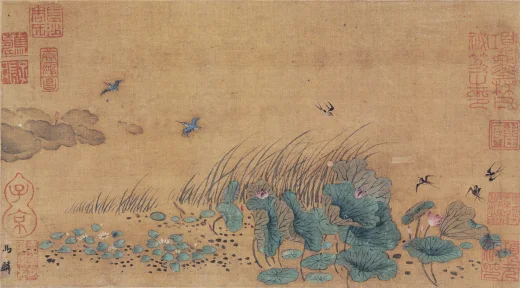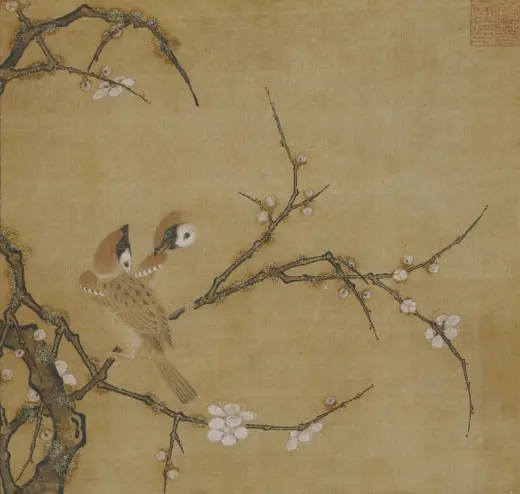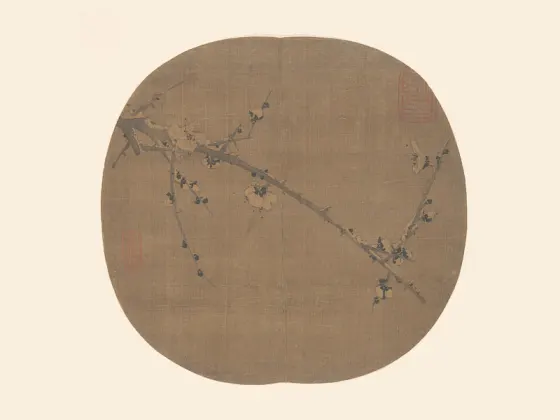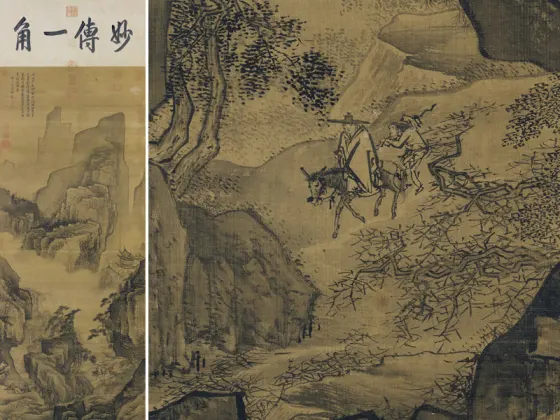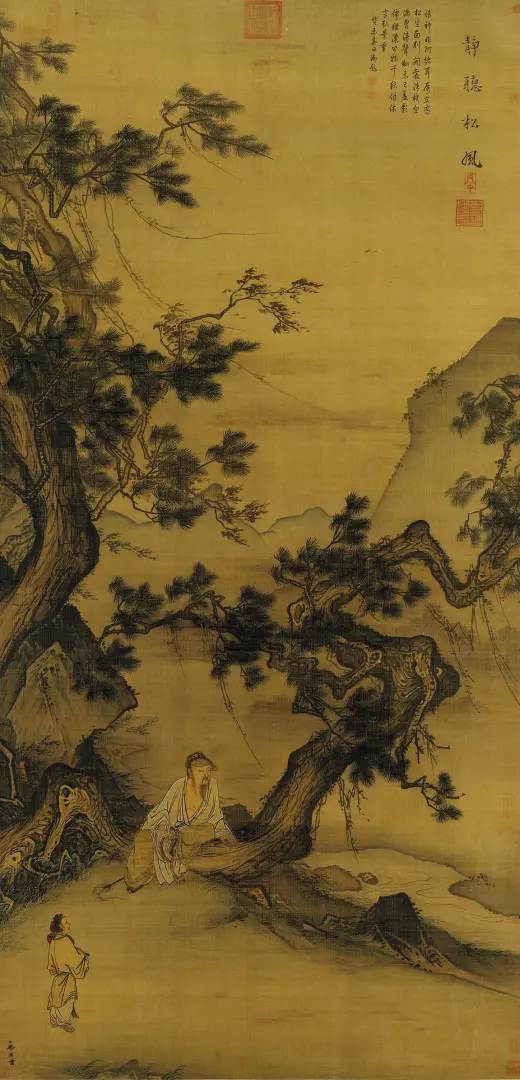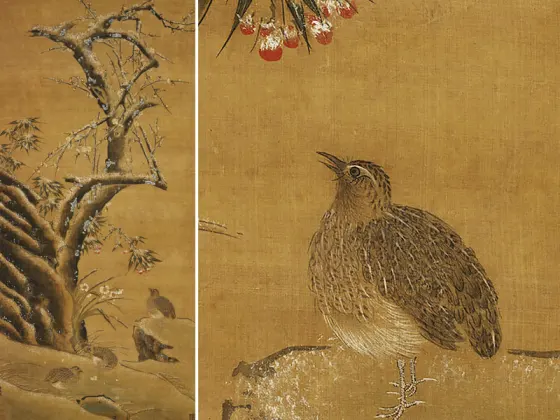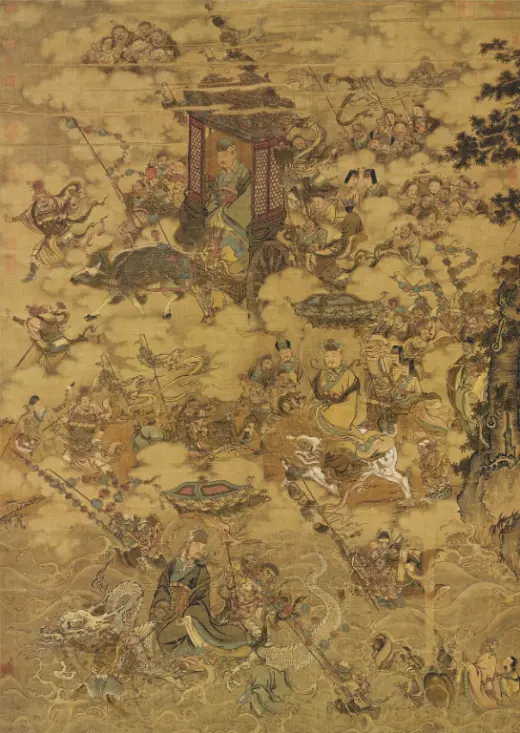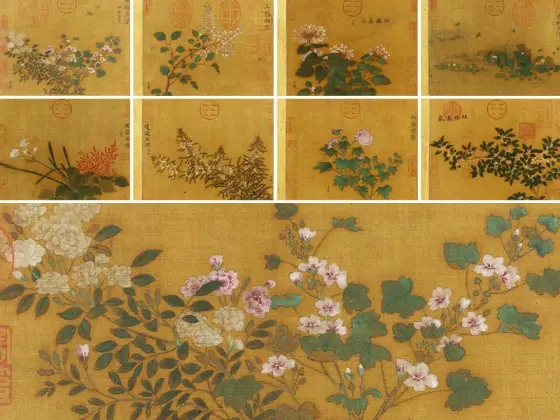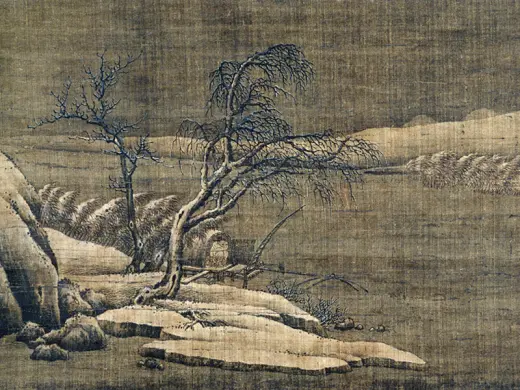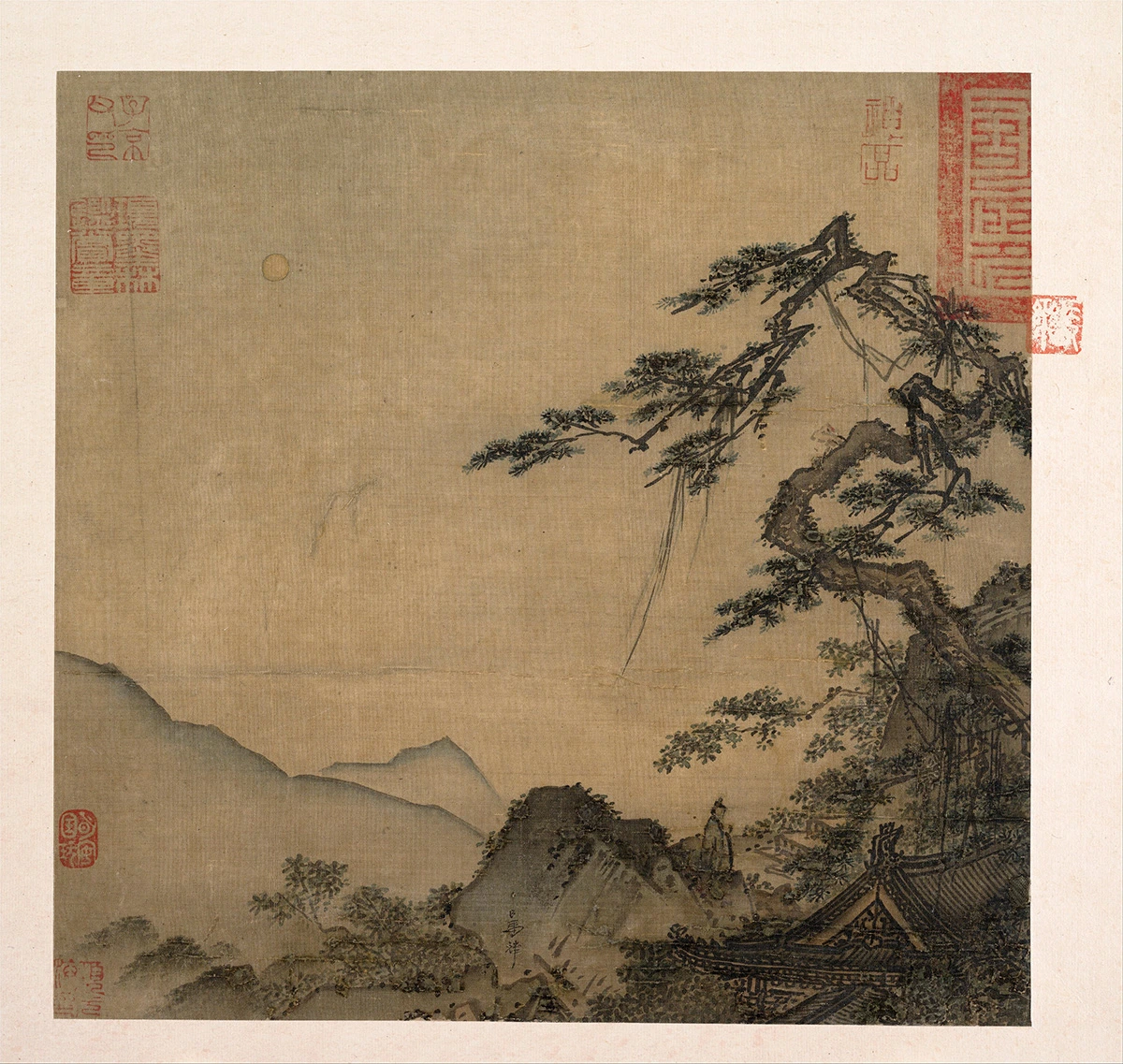
高清大图局部细节 / DETAILS
由山崖蜿蜒转入山寺的路上,一位流连与山水之间的高士,在一株爬满枯藤的古松之下徜徉,仿佛与起伏的远山明月融为一体,构成了一幅人与自然合而为一的完美景象。画面构图简洁而高旷,下半部分的实与上半部分的虚形成鲜明对比,进而产生高而深远的意境。二者之间以一棵长松相连,使画面自然而然成为一个整体。由实及虚的三段递进,将最写实的建筑、虚实相间的山崖坡石以及淡远的山峦,组成了位于高处的平远构图。山石采用小斧劈皴简略画出,画面的层次主要依赖点染进行刻画。画的中央,摇曳的藤蔓是全画的点睛之笔,山水之间,清风徐来,画面一下子动了起来,让人感受到一种清凉与惬意。
The reductionist transformation from Northern Song monumental landscapes to symbolic images of single rocks and trees is complete with the work of Ma Lin. Ma's painting turns away from the realism of earlier Song Imperial Painting Academy works in favor of a new abstraction. In the absence of an accompanying poem, the meaning of this complex scene remains unclear. The Daoist-inspired imagery seems to hold out the promise of transcendence or escape. Outdoor altars are places of worship and meditation, cranes are known as the vehicles and companions of Daoist immortals, the evergreen pine is an emblem of longevity, and the full moon recalls the palace of the moon goddess, Chang E, whose hare prepares the elixir of immortality. Yet the immortals have not come, and the moon is far away. The figure is anchored to this world and can no more reach the moon than can the outstretched branches of the pine. There is a sense of brooding and foreboding in the tortuous, restless form of the tree that may well be influenced by the impending threat of Mongol invasion.
从北宋气势恢宏的山水画演变为以孤石残木为象征的减意美学,这一艺术变革在马麟笔下臻于完成。他的作品摒弃了宋代早期画院派的写实传统,转向一种全新的抽象表达。这幅画作若无题诗相伴,其深邃意境便难以捉摸——道家庄子思想启发的意象似乎寄托着超脱尘世或遁隐避世的期许。露天祭坛是祭祀冥想的场所,仙鹤被誉为道教真人的坐骑与友伴,苍松象征着长生不朽,满月则令人联想到月宫仙子嫦娥的居所,玉兔正在那里捣制长生灵药。然而仙人终未降临,月宫遥不可及。画中人物仍羁绊于尘世,既无法抵达月宫,亦如虬松伸展的枝桠般不可触及天际。在扭曲不安的松树形态中,隐约透露出沉思与不祥的预感,这很可能源自蒙古铁骑南侵的迫近威胁。
 洛神赋图
洛神赋图 步辇图
步辇图 唐宫仕女图
唐宫仕女图 五牛图
五牛图 韩熙载夜宴图
韩熙载夜宴图 千里江山图
千里江山图 清明上河图
清明上河图 富春山居图
富春山居图 汉宫春晓图
汉宫春晓图 百骏图
百骏图 溪山行旅图
溪山行旅图 早春图
早春图 中国名画大全
中国名画大全